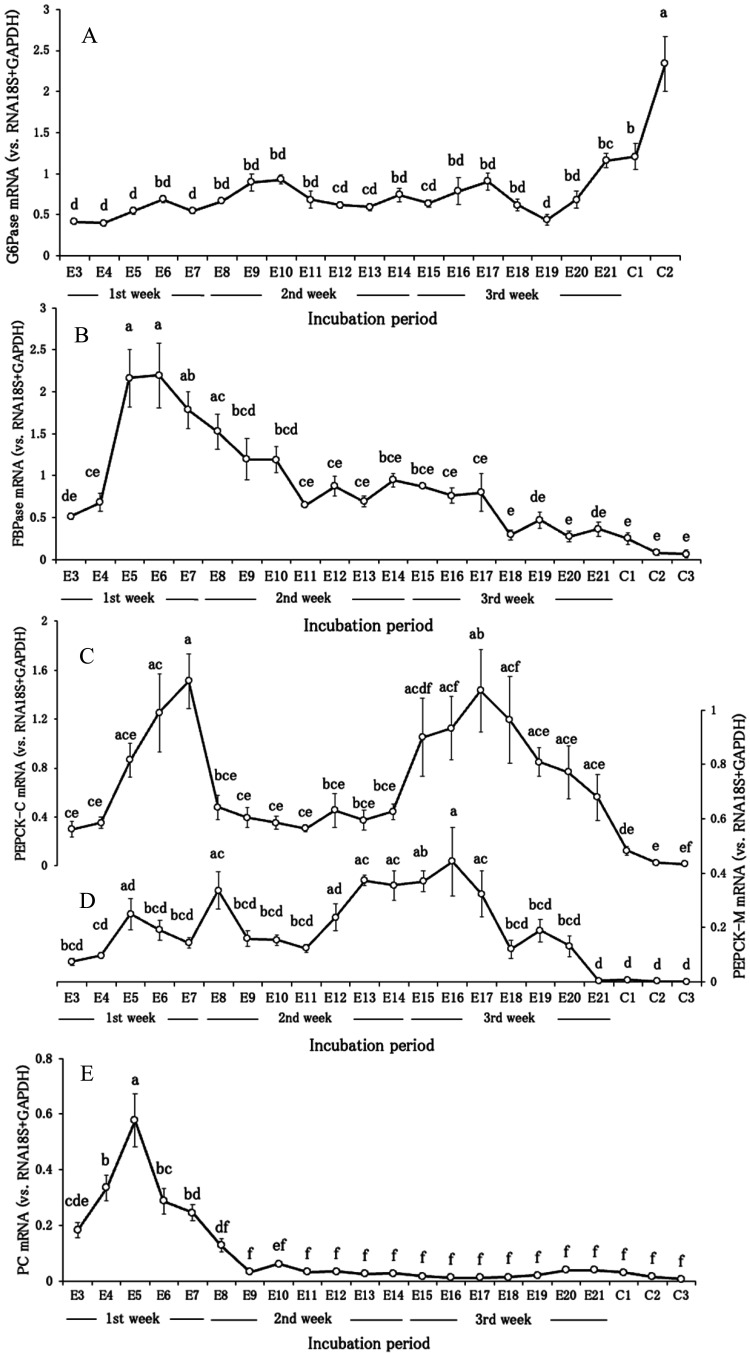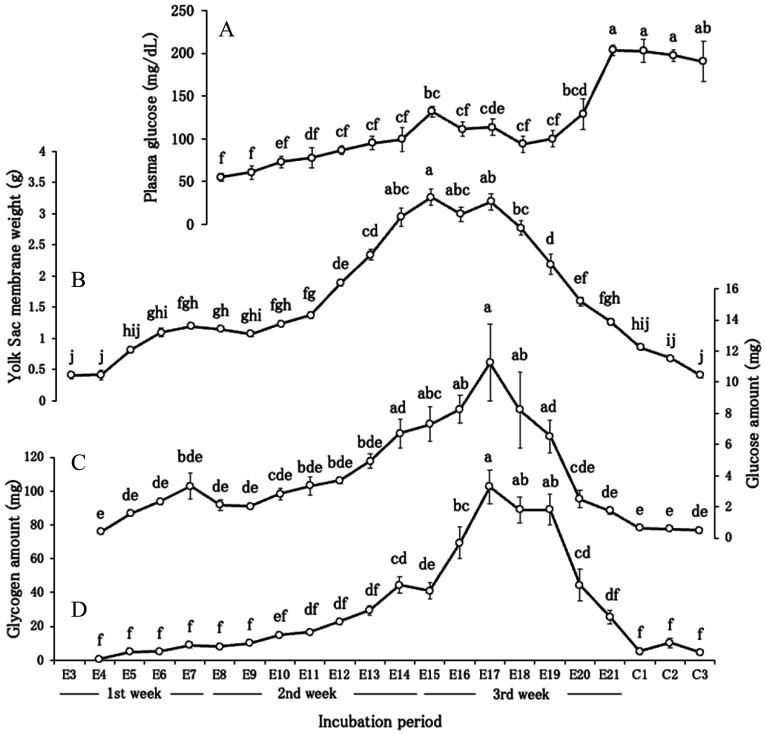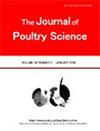Gluconeogenesis in the Yolk Sac Membrane: Enzyme Activity, Gene Expression, and Metabolites During Layer Chicken Development.
IF 1.6
4区 农林科学
Q2 AGRICULTURE, DAIRY & ANIMAL SCIENCE
引用次数: 0
Abstract
ABSTRACT Yolk sac membranes of layer eggs were collected daily (n = 7–9) from day three of incubation to day three post-hatch, and mRNA expression and activities were quantified for key gluconeogenesis enzymes (glucose-6-phosphatase, fructose-1,6-bisphosphatase, cytosolic and mitochondrial phosphoenolpyruvate carboxykinases, and pyruvate carboxylase). Lactate, triglycerides, non-esterified fatty acids, glycogen, and glucose in the yolk sac membrane, and blood glucose levels were also measured. The mRNA expression and activity were detected for all enzymes. Differences in expression levels and enzyme activities seemed to reflect the embryo’s developmental environment and physiological demands at different developmental stages. During the first week to the mid-second week of incubation, the expression and activity of gluconeogenic enzymes and lactate concentrations were high, suggesting an active period of gluconeogenesis from lactate, reflecting possible hypoxia in the embryo before completed formation of the chorioallantoic capillaries. From the mid-second week to mid-third week, when embryos were in an aerobic state, the triglyceride and non-esterified fatty acid contents increased in the yolk sac. Triglycerides from yolk lipids are typically hydrolyzed to produce non-esterified fatty acids as an energy source, whereas the glycerol skeleton is used for gluconeogenesis. In the late third week, when embryos were considered to re-enter an anaerobic state, the mRNA expression and enzyme activity of only glucose-6-phosphatase were high and the amount of glycogen in the yolk sac was reduced. Therefore, it is suggested that gluconeogenesis activity is low during this period, and the carbohydrates stored in the yolk sac membrane are secreted into the blood as energy for hatching. This study confirmed the role of the yolk sac membrane as a vital gluconeogenic organ during chicken egg incubation.



蛋鸡卵黄囊膜中的糖异生:酶活性、基因表达和代谢产物。
从孵育第3天至孵化后第3天,每天(n = 7-9)采集蛋蛋卵黄囊膜,定量测定关键糖异生酶(葡萄糖-6-磷酸酶、果糖-1,6-双磷酸酶、胞质和线粒体磷酸烯醇丙酮酸羧化酶和丙酮酸羧化酶)mRNA表达和活性。测定卵黄囊膜中的乳酸、甘油三酯、非酯化脂肪酸、糖原、葡萄糖和血糖水平。检测各酶的mRNA表达量和活性。表达水平和酶活性的差异似乎反映了胚胎在不同发育阶段的发育环境和生理需求。在孵育的第1周至第2周中期,糖异生酶的表达和活性以及乳酸浓度都很高,提示乳酸糖异生的活跃期,反映胚胎在绒毛膜尿囊毛细血管完全形成之前可能存在缺氧。从第二周中期到第三周中期,当胚胎处于有氧状态时,卵黄囊内甘油三酯和非酯化脂肪酸含量增加。蛋黄脂中的甘油三酯通常被水解成非酯化脂肪酸作为能量来源,而甘油骨架则用于糖异生。在第三周后期,当胚胎被认为重新进入厌氧状态时,只有葡萄糖-6-磷酸酶的mRNA表达量和酶活性高,卵黄囊中糖原的数量减少。因此,这一时期糖异生活性较低,卵黄囊膜中储存的碳水化合物被分泌到血液中作为孵化的能量。本研究证实了卵黄囊膜在鸡蛋孵化过程中作为一个重要的糖异生器官的作用。
本文章由计算机程序翻译,如有差异,请以英文原文为准。
求助全文
约1分钟内获得全文
求助全文
来源期刊

Journal of Poultry Science
AGRICULTURE, DAIRY & ANIMAL SCIENCE-
CiteScore
2.80
自引率
13.30%
发文量
26
审稿时长
12 months
期刊介绍:
The Journal of Poultry Science will publish original reports and reviews which either make an original contribution to fundamental science or are of obvious application to the industry. Subjects which are covered include: breeding and genetics, nutrition and feeds, physiology, reproduction, immunology, behavior, environmental science, management and housing welfare, processing and products, and health in poultry. Submission of original articles to the Journal is open to all poultry researchers. The review articles are invited papers written by international outstanding researchers. Articles will be published in English, American style.
 求助内容:
求助内容: 应助结果提醒方式:
应助结果提醒方式:


